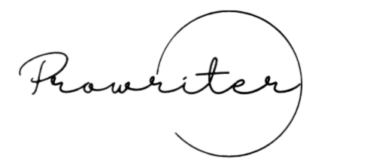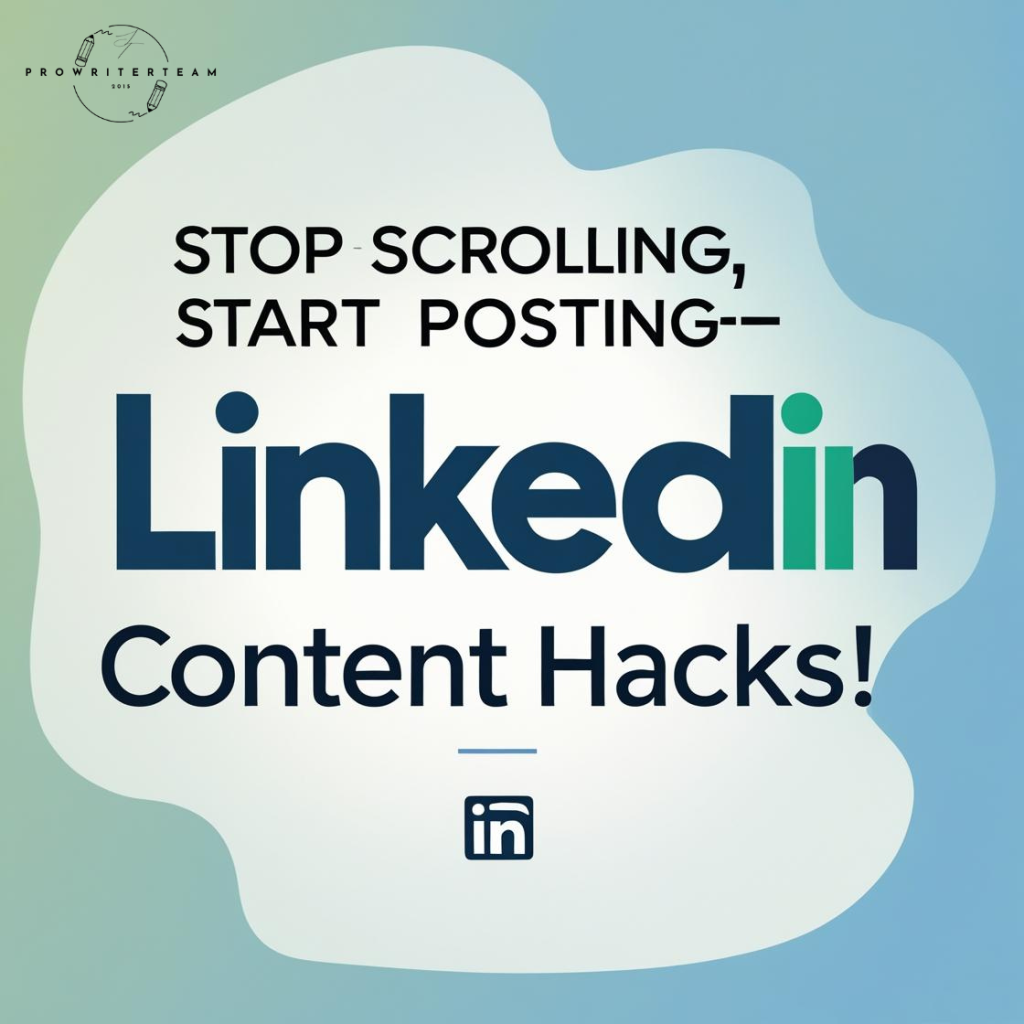LinkedIn has evolved from a simple professional networking site into a powerful content platform where thought leaders, entrepreneurs, and businesses share insights, build authority, and generate leads. With over 1 billion users worldwide, LinkedIn offers unparalleled opportunities for personal branding and business growth—if used strategically.
Check out other posts from ProWriterTeam here.
If you’re looking to maximize LinkedIn as a content platform, this guide provides actionable tips you won’t want to miss. From optimizing your profile to crafting engaging posts and leveraging LinkedIn’s algorithm, we’ll cover everything you need to know to succeed.
Let’s get to it.
Why LinkedIn is a Must-Use Content Platform
Before diving into the strategies, let’s understand why LinkedIn stands out:
- High-Quality Audience – Unlike other social platforms, LinkedIn users are professionals actively seeking industry insights, networking opportunities, and business solutions.
- Strong Organic Reach – LinkedIn’s algorithm favors valuable content, meaning well-crafted posts can reach thousands without paid promotion.
- Authority Building – Consistently sharing expertise establishes you as a thought leader in your niche.
- Lead Generation & Networking – Engaging content attracts potential clients, partners, and employers.
- SEO Benefits – LinkedIn profiles and posts rank well on Google, increasing your online visibility.
Now, let’s explore the best LinkedIn content strategies to help you dominate the platform.
1. Optimize Your LinkedIn Profile for Maximum Impact
Your profile is your digital business card. Before posting content, ensure it’s fully optimized to attract the right audience.
Key Profile Optimization Tips:
✔ Professional Headline – Don’t just list your job title. Instead, highlight your expertise (e.g., “Digital Marketing Strategist Helping Brands 10X Their Online Presence”).
✔ Strong About Section – Write in first-person, focusing on who you help and how you solve their problems. Use relevant keywords for SEO.
✔ Featured Section – Showcase your best posts, articles, case studies, or media (videos, PDFs, links).
✔ Skills & Endorsements – List key skills and get endorsements from colleagues to boost credibility.
✔ Custom URL – Change your LinkedIn URL to linkedin.com/in/yourname for a cleaner look.
Pro Tip: Use a high-quality background banner that reflects your brand (e.g., a tagline, services, or a motivational quote).
2. Understand LinkedIn’s Algorithm to Boost Reach
LinkedIn’s algorithm prioritizes engagement and relevance. The more interactions your post gets early on, the wider it spreads.
How the LinkedIn Algorithm Works:
✅ First-Hour Engagement – Posts that get quick likes, comments, and shares rank higher.
✅ Meaningful Comments – Replies that spark discussions (not just “Great post!”) signal value.
✅ Dwell Time – The longer people stay on your post, the better. Use engaging hooks and storytelling.
✅ Creator Mode – Turning this on helps LinkedIn prioritize your content.
Pro Tip: Post when your audience is most active (usually Tuesday-Thursday, 8-10 AM or 12-2 PM).
Enjoying this article, check out other posts from ProWriterTeam here.
3. Craft Engaging LinkedIn Content That Stands Out
Generic posts don’t perform well. To capture attention, your content must be valuable, relatable, and engaging.
Best Types of LinkedIn Content:
📌 Educational Posts – Share industry insights, how-tos, and trends.
📌 Storytelling – Personal experiences (failures, lessons, successes) resonate deeply.
📌 Opinion Pieces – Bold takes on industry news spark discussions.
📌 Case Studies & Results – Show real examples of your work.
📌 Polls & Questions – Encourage interaction (e.g., “What’s your biggest marketing challenge?”).
📌 Carousels & Videos – Highly engaging formats (LinkedIn videos get 5x more engagement).
Pro Tip: Hook readers in the first 2-3 lines—ask a question, share a surprising stat, or make a bold statement.
4. Leverage LinkedIn Articles for Long-Form Authority
While short posts drive engagement, LinkedIn Articles (long-form posts) help establish deep expertise.
How to Write High-Impact LinkedIn Articles:
🔹 Choose Evergreen Topics – Write about timeless industry challenges.
🔹 Use Subheadings & Bullet Points – Improves readability.
🔹 Add Data & Examples – Back up claims with research or case studies.
🔹 Include a Strong CTA – Ask readers to comment, share, or connect.
Pro Tip: Repurpose blog content into LinkedIn Articles (but tweak for LinkedIn’s audience).
5. Engage Strategically to Grow Your Network
Posting alone isn’t enough—engagement fuels visibility.
Effective Engagement Strategies:
💬 Comment on Industry Leaders’ Posts – Add insightful thoughts (not just emojis).
🤝 Respond to Every Comment on Your Posts – Keeps the conversation going.
🔔 Use LinkedIn’s “Notify Your Network” Feature – Alerts followers when you post.
📥 DM Engaged Followers – Build relationships with personalized messages.
Pro Tip: Join LinkedIn Groups in your niche and participate in discussions.
6. Use LinkedIn Analytics to Refine Your Strategy
Track performance to see what works.
Key Metrics to Monitor:
📊 Post Views & Engagement Rate – Which posts perform best?
👥 Follower Growth – Is your audience expanding?
📈 Profile Views – Are more people checking you out?
Adjust your strategy based on data—double down on high-performing content.
7. Monetize Your LinkedIn Presence
Once you’ve built authority, explore monetization:
💰 Consulting & Coaching – Offer services to your audience.
📢 Sponsored Posts – Partner with brands for promotions.
📚 Selling Digital Products – E-books, courses, templates.
Enjoying this article, check out other posts from ProWriterTeam here.
ProWriterTeam Verdict on Tips for Using LinkedIn as Your Content Platform
LinkedIn is a Goldmine for Content Creators. By optimizing your profile, mastering the algorithm, posting engaging content, and networking strategically, LinkedIn can become your #1 platform for professional growth.
Faq
1. Why should I use LinkedIn as a content platform?
LinkedIn is the leading professional network with over 1 billion users. It’s ideal for B2B marketing, personal branding, and networking with industry leaders. High-quality content can boost visibility, credibility, and career opportunities.
2. What type of content performs best on LinkedIn?
Engaging content includes:
- Thought leadership articles
- Industry insights & trends
- Career tips & professional growth advice
- Success stories & case studies
- Short-form posts with visuals or videos
3. How often should I post on LinkedIn for maximum engagement?
Consistency matters! Posting 2-5 times per week keeps you visible without overwhelming your audience. Quality over quantity is key.
4. Should I use hashtags on LinkedIn, and how many?
Yes! Hashtags help categorize your content. Use 3-5 relevant hashtags (e.g., #Leadership, #CareerGrowth, #DigitalMarketing) to increase discoverability.
5. Is LinkedIn better for long-form articles or short posts?
Both work! Short posts (300-500 words) get quick engagement, while long-form articles (LinkedIn Articles) establish authority. Mix both for a balanced strategy.
6. How can I increase engagement on my LinkedIn posts?
- Ask questions to spark discussions
- Tag relevant people (sparingly)
- Use eye-catching visuals/videos
- Post during peak times (Tues-Thurs, 8-10 AM or 12-2 PM)
- Engage with comments to boost visibility
7. Should I repurpose content from other platforms on LinkedIn?
Yes, but tailor it for LinkedIn’s professional audience. Avoid direct cross-posting—adjust tone, format, and messaging to fit the platform.
8. How does LinkedIn’s algorithm work for content visibility?
LinkedIn prioritizes:
- Relevance & value of content
- Early engagement (likes/comments in the first hour)
- Meaningful conversations (not just likes)
- Authenticity over promotional content
9. Can LinkedIn help me generate leads or business opportunities?
Absolutely! By sharing valuable insights, engaging with prospects, and using LinkedIn’s tools (e.g., newsletters, DMs, and LinkedIn Sales Navigator), you can attract clients and partnerships.
10. What’s the biggest mistake people make on LinkedIn?
Posting overly promotional content without providing value. Instead, focus on educating, inspiring, or solving problems for your audience to build trust and authority.
This article provides a comprehensive breakdown of why content marketing should be a top priority, with data-backed insights and real-world examples.

